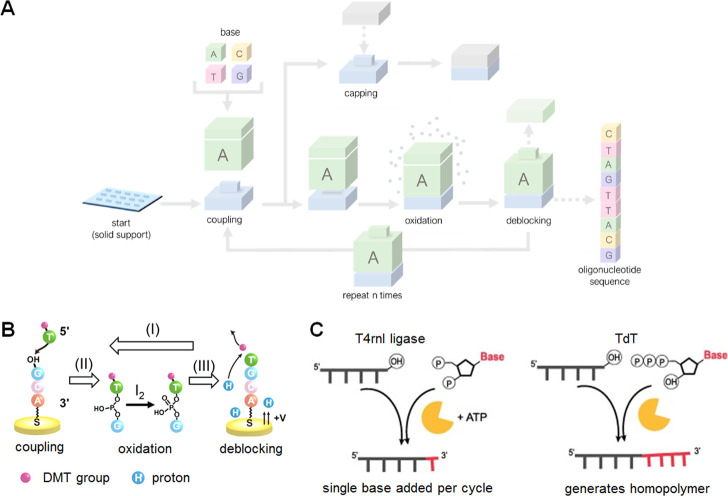Figure 3.
An overview of chemical and enzymatic strategies to synthesize custom DNA sequences. (A) Phosphoramidite synthesis—the most widely used chemical strategy for the synthesis of DNA—involves the sequential addition of nucleotides to a growing chain anchored on a solid support. Protecting groups are employed to ensure that no more than one nucleotide is added at each step and are then subsequently removed via chemical deblocking. (B) Deblocking can also be performed by electrochemistry. Reproduced with permission under a Creative Commons Attribution 4.0 License (CC BY-NC) from ref (31). Copyright 2021 AAAS. (C) Enzymatic methods relying on T4rnl ligase or TdT can also be used to specifically add bases to a growing oligonucleotide in aqueous environments, which eliminates the need for organic solvents. Image reproduced with permission under a Creative Commons Attribution 4.0 License (CC BY) from ref (32). Copyright 2021 Elsevier B.V.

